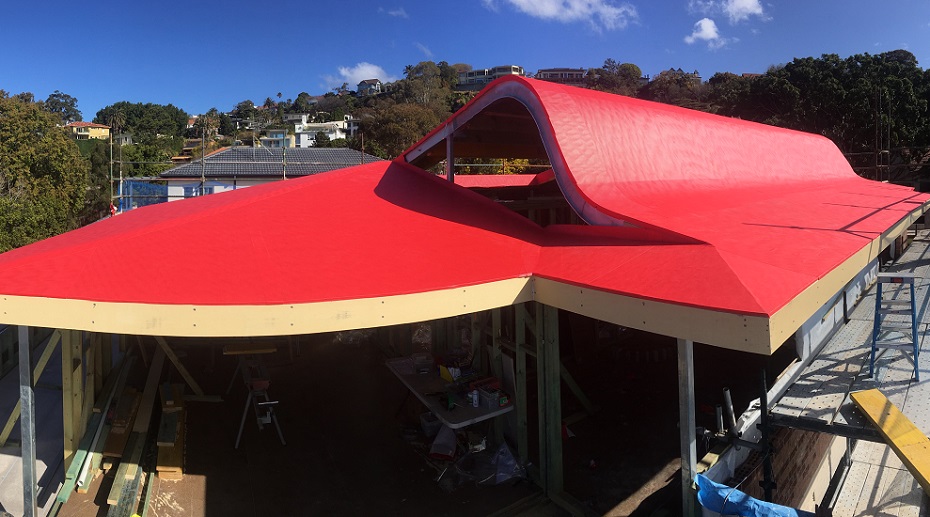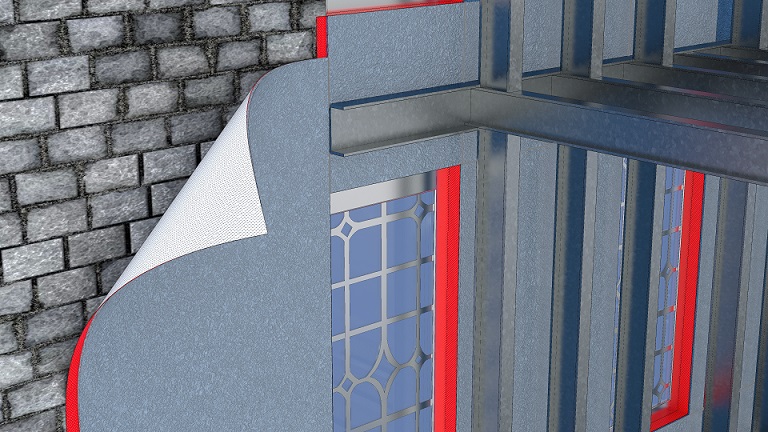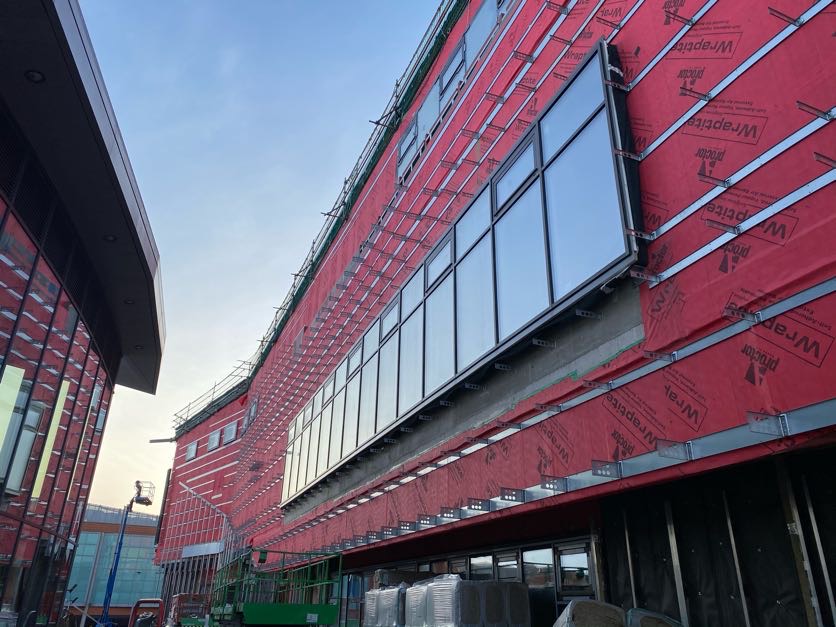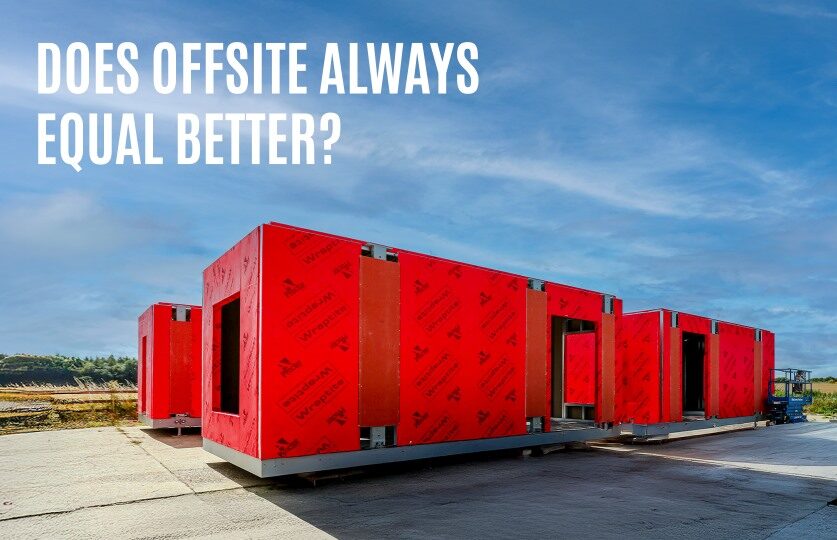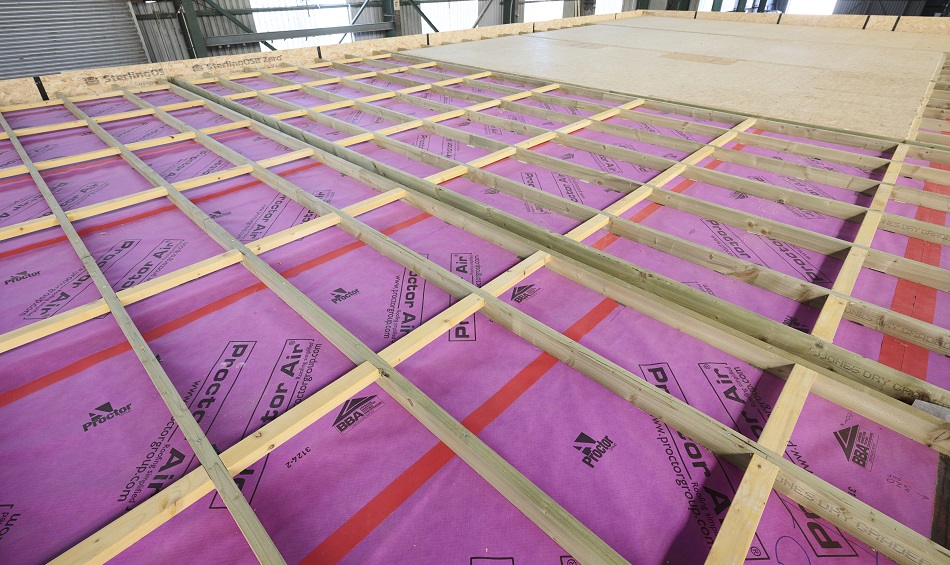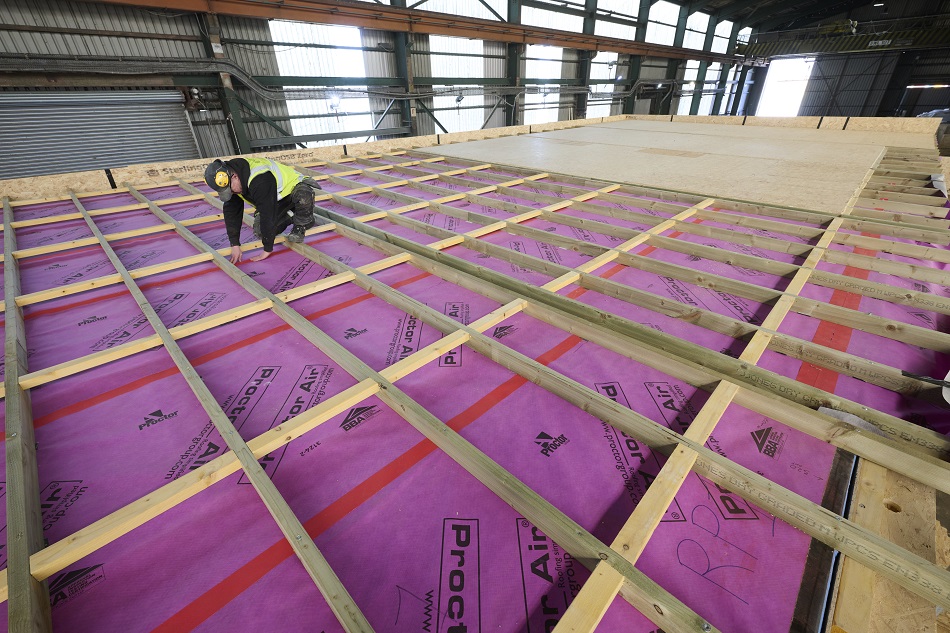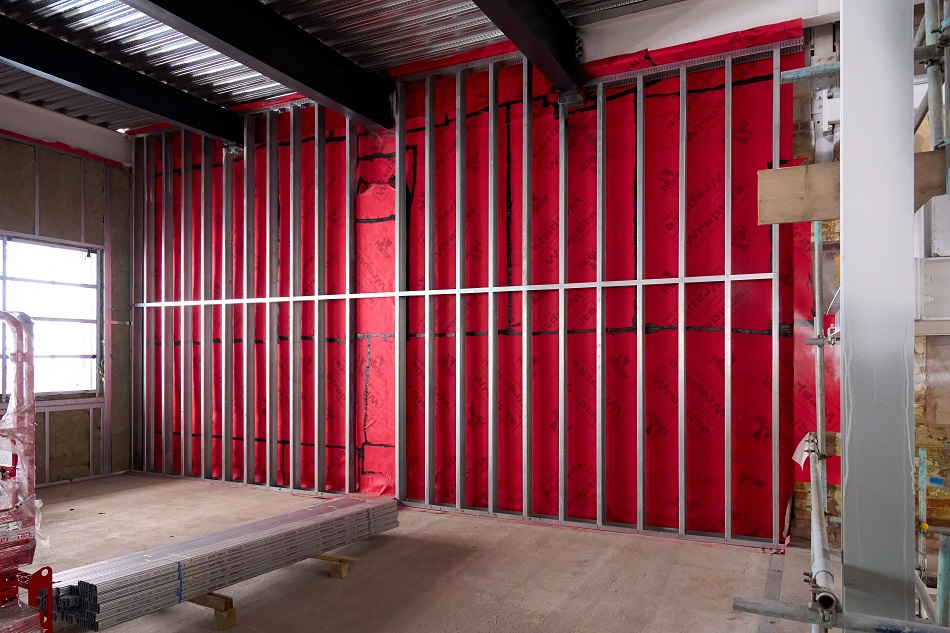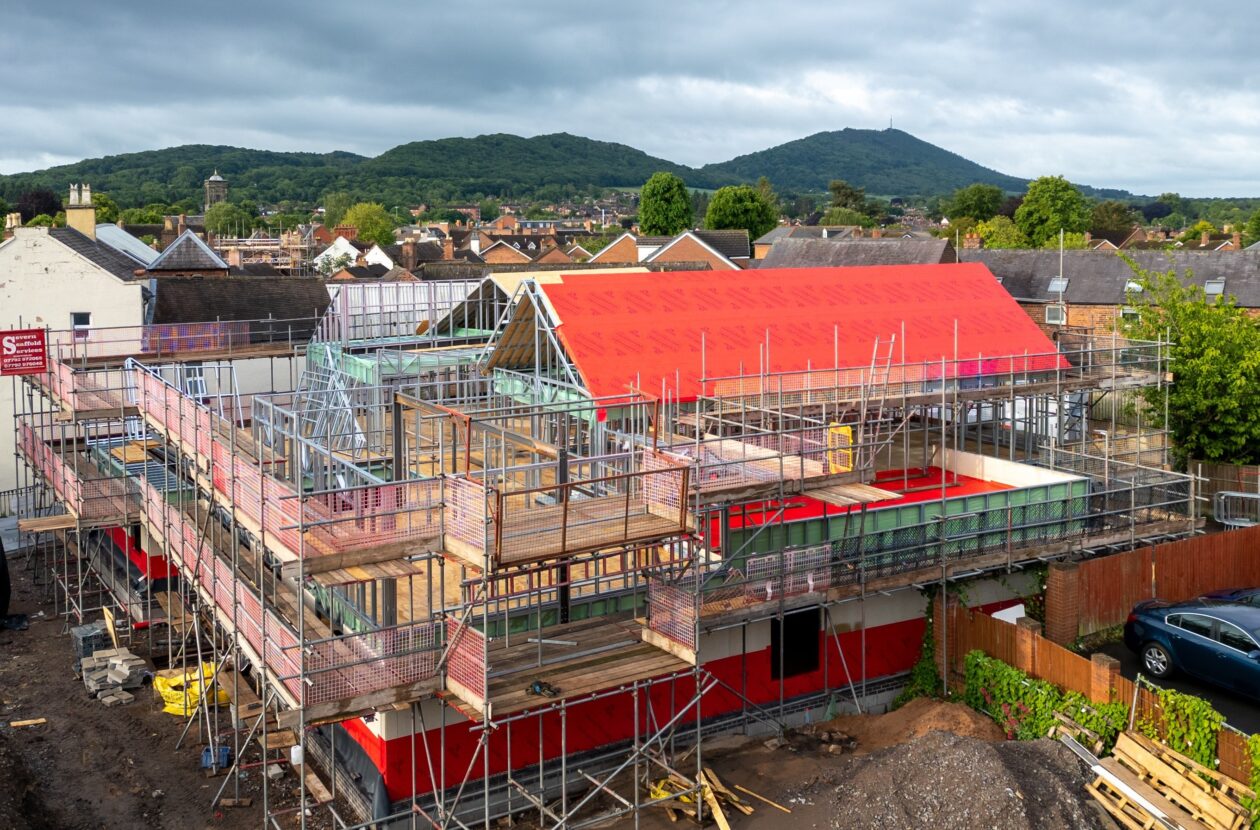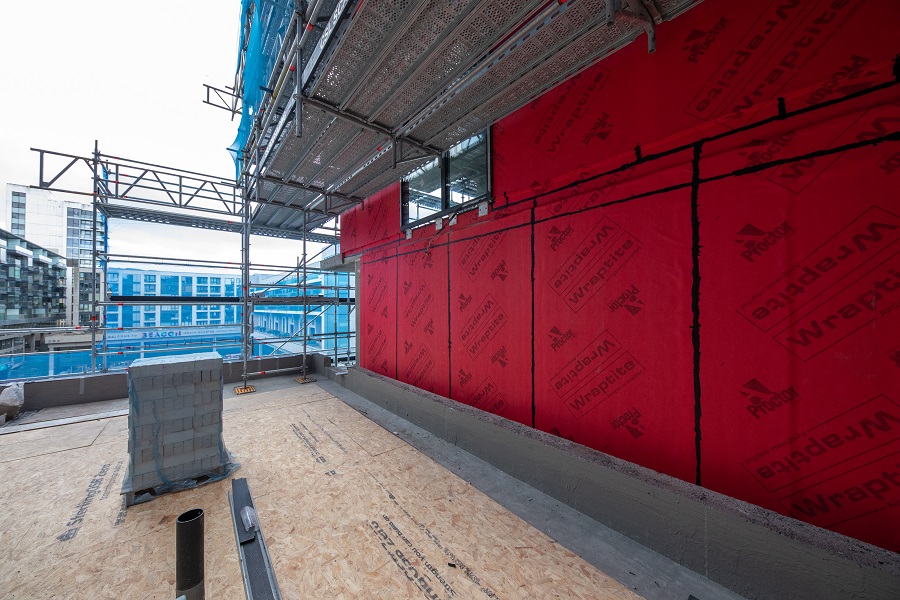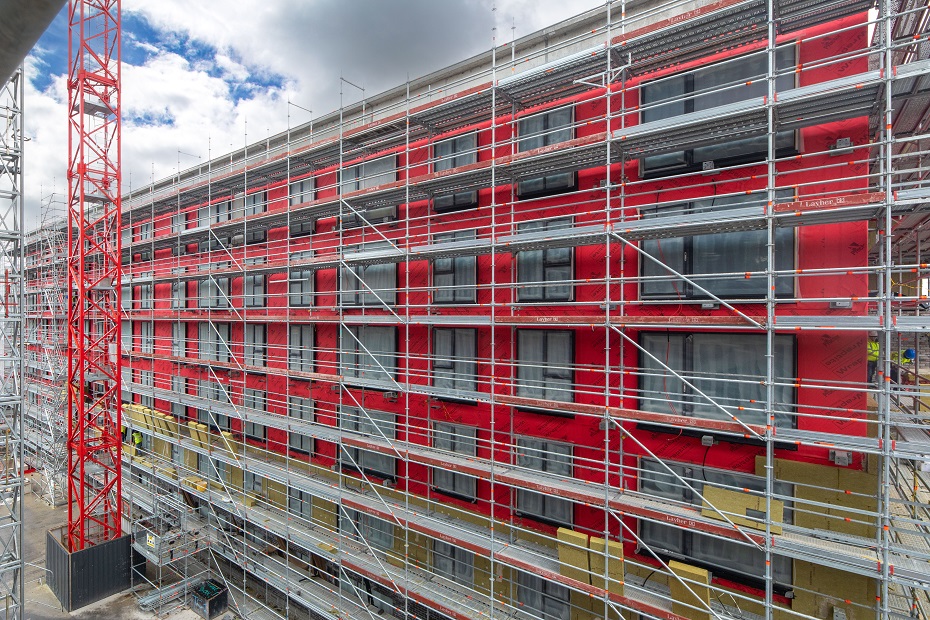The relationship between adhesive and membrane is complex
A non-self-adhered membrane relies ‘only’ on the composition of the base membrane, and the taping of joints and overlaps, for its vapour permeability and airtightness.
Creating a self-adhered membrane product is not as simple as taking a membrane and just adding adhesive. There are a host of potential ways in which adhesive can negatively impact the performance of the base membrane.
Ideally, a self-adhered membrane will feature a vapour permeable adhesive. If moisture vapour can pass through the adhesive by diffusion, then it reaches the membrane itself quicker. It then passes through the airtight-but-vapour-permeable layer, helping to quickly dry out the building and reach/maintain moisture equilibrium.
Wraptite, for example, features patented technology that helps to deliver the adhesives unique vapour transmission properties. Other membranes don’t enjoy that patented technology and therefore can’t offer the same vapour permeability.
Different products meet the needs of different construction methods
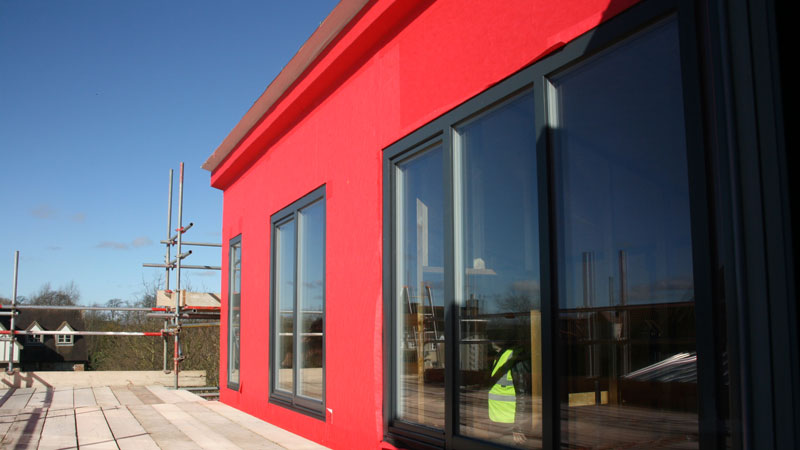
What is right for one market is not necessarily best-suited to another market. Self-adhered membranes initially designed for use in Europe may use different adhesives formulations, because that market uses a different definition of ‘breathable’ for a wall or roof.
Due to common construction practices on the continent, which may not be mirrored in the UK, membrane products are sometimes manufactured differently and tend to have higher water resistances.
European membrane might, for example, use a monolithic construction (the centre layer is extruded between two carrier layers, as one). The UK widely uses film laminates (three separate films bonded together). Traditionally, monolithic products are less breathable.
‘Breathable’ self-adhered monolithics are entering the UK marketplace, with claims of being more robust, more UV stable, and more water resistant.
Some of these products are marketed as an ‘equivalent’ to our Wraptite, or even our Wraptite UV, though they do not offer the same performance. Crucially, they may also fail to comply with the parameters of BS 5250:2021 – for either general use in walls, or for behind open-jointed cladding.
What performance should a vapour permeable membrane offer?
BS 5250:2021 Management of moisture in buildings. Code of practice defines a vapour permeable membrane for walls as having a water vapour resistance (sd) of less than 0.12m but greater than 0.05m (or 0.6 to 0.25 MNs/g) – although many walling membranes will exhibit lower resistances and still compliant.
For use behind open-jointed cladding, BS 5250 says that if a membrane’s sd value is greater than 0.12m then a condensation risk analysis should be carried out, but stipulates the permeability must not exceed an sd of 0.25m.
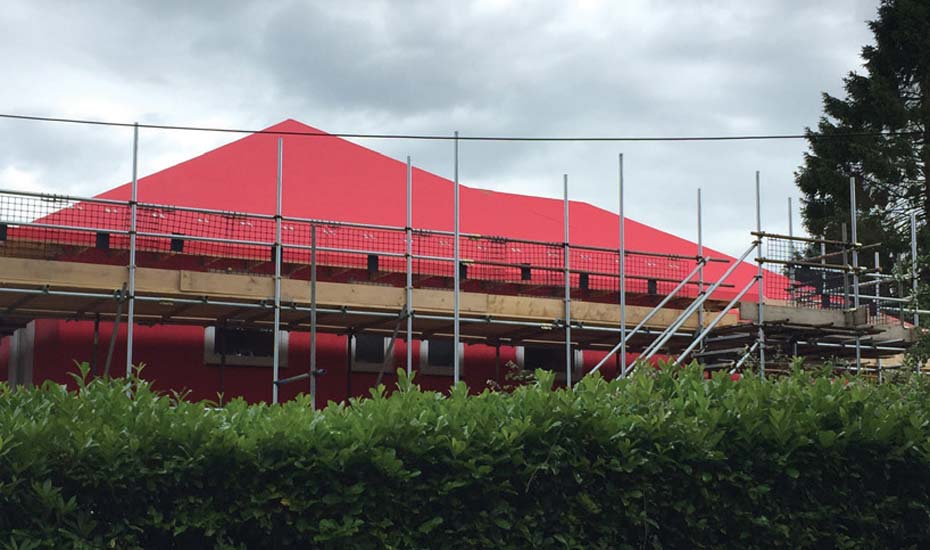
What is the risk of assuming all self-adhered membranes are the same?
More choice of products that, at face value, might seem to perform the same function, introduces more risks. Being familiar with using a product like Wraptite, and then being offered a cheaper alternative, it’s crucial to understand where there are differences.
Start delving into installation and substrate performance, for example, and you find other products need tapes or adhesives or primers or accessories. Suddenly that ‘cheaper’ product is a lot less economical.
Or maybe the roll is smaller, and you need double the width of the overlaps at joints – which results in a lot of extra coverage, more product required, and extra cost.
Then there is the question of how a product has been tested. At the A. Proctor Group we carry out a lot of testing on a variety of substrates to fully understand how Wraptite performs. Other products have a more limited array of testing that doesn’t correlate to all applications.
All of these nuances – in permeability, strength, fire performance – are critical to performance and safety. Using something that performs differently to an established solution puts extra pressure on specifiers and installers to understand what the alternative is offering, and to make sure that walls are well-designed in order to avoid trapping moisture and causing issues within the build-up.
In the face of aggressive marketing or cost-saving quotes, good practice is to get the information needed to make informed decisions. That can be daunting, but responsible manufacturers should welcome the opportunity to explain more about their solution.
For more information, visit https://proctorgroup.com/products/wraptite
The A. Proctor Group have a specialist team of highly qualified and experienced technical staff, able to offer a wide range of support & services. Our services are regularly used by all sectors of the construction industry, from national housebuilders to architectural practices and self builders. We offer advice at all stages of the building process, from design work to on site support.
Request a Sample
Technical Advice
CAD Detail Review
U-Value Calculation
Book a CPD
Specification Check
